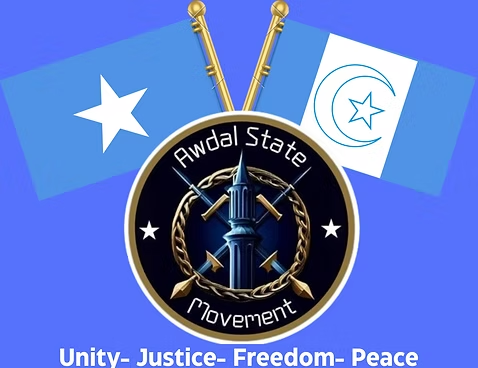Introduction:
The Gadaboursi (also spelled Gadabursi or Gadabuursi), a major Dir clan with deep roots in the Horn of Africa, have historically been bound by strong kinship, shared customs and collective responsibility. Traces of their lineage and political life can be seen in the medieval Adal Sultanate, a Muslim polity in which Dir clans, including ancestors of the Gadaboursi, participated alongside other groups in trade, scholarship and military resistance against expanding Christian Abyssinian states. Today the Gadaboursi population is dispersed across three modern states, northwestern Somalia (Awdal, Salal, and Gabiley Distruct), Djibouti and eastern Ethiopia (the Somali Region and adjacent areas), and that transnational presence shapes both their strengths and vulnerabilities. This article outlines a growing, often overlooked danger: the erosion of Gadaboursi unity and the consequences of that decline.
Historical context:
The Gadaboursi trace part of their historical identity to the broader political and social networks of the Adal period (roughly 13th–16th centuries), when Muslim-led sultanates and confederations in the Horn engaged in regional trade, learning and military campaigns. During the 16th century, figures from the Adal resistance, and the networks that sustained them, left a legacy of political organization, inter-clan alliances and shared memory that helped bind neighbouring Dir groups. Over time, colonial borders and the creation of modern nation-states fragmented these historic patterns, leaving Gadaboursi communities split among Ethiopia, Djibouti and Somalia. That division complicates unified political representation, cross-border social support and cultural transmission.
Loss of unity:
A key danger now is the gradual weakening of the communal solidarity that historically allowed Gadaboursi to defend kin, mediate disputes and coordinate collective economic and political action. As members settle in different countries, integrate with other communities, or pursue individual opportunities abroad, traditional mutual-support mechanisms, clan-based protection, dispute resolution through elders, and cross-border kin networks, are stressed. The result can be slower or weaker responses when individuals or groups face discrimination, land disputes, political marginalization or violence.Impact of cross-border dispersion and assimilation:Dispersion across three states has advantages (diverse opportunities, wider networks) but also costs. Different legal systems, languages of administration, schooling curricula and national loyalties can produce divergent identities among Gadaboursi youth. Intermarriage and social integration enrich communities but may dilute shared rituals, historical knowledge and the institutions that once coordinated communal defense and advocacy. Where elders’ authority and customary institutions weaken, individuals lose accessible, trusted mechanisms for protection and redress.
Consequences of inaction:
If the decline in solidarity continues, Gadaboursi communities risk diminished influence in local and national politics in each country where they live, reduced capacity to protect communal lands and resources, and greater vulnerability to social and economic marginalization. Cross-border disputes or state-level policies that affect one community may go unanswered if the wider clan network does not mobilize. The erosion of shared history and institutional memory also weakens collective resilience in times of crisis.Reviving unity while respecting modern realities:Rebuilding Gadaboursi solidarity does not mean rejecting integration or modern institutions. Rather, it means adapting traditional bonds to contemporary, transnational contexts so the clan’s members can protect their rights, preserve heritage and coordinate action when needed.
Practical steps:
1. Cultural education and historical awareness: Promote teaching about Gadaboursi history, including their role in medieval Adal networks and cross-border heritage, through community schools, oral-history projects and digital archives.
2. Strengthen cross-border institutions: Support councils of elders, youth associations and professional networks that include representatives from Somaliland, Djibouti and Ethiopia to coordinate on common issues (land claims, migration, justice).
3. Invest in community centers and media: Establish cultural centers, radio programs and online platforms in relevant languages to maintain shared norms, facilitate dispute mediation, and disseminate news affecting Gadaboursi across borders.
4. Civic engagement and legal literacy: Provide training on citizens’ rights and national legal systems in each country so Gadaboursi can defend land and civic rights without relying solely on informal channels.
5. Promote intergenerational leadership: Encourage mentorship that links elders’ customary knowledge with youth leadership skilled in advocacy, technology and cross-border organization.
6. Build alliances: Work with other clans, civil society and regional bodies to pursue shared development projects and protect minority rights within each state.
Conclusion:The Gadaboursi have a long historical identity shaped in part by the networks of the Adal era and by centuries of cross-border ties. Their division across Ethiopia, Djibouti and Somalia presents both opportunities and risks. The most important near-term danger is not physical alone but the slow unraveling of solidarity and institutions that once protected the clan. Reviving adaptive, transnational forms of unity, rooted in history but oriented to contemporary realities, can help the Gadaboursi safeguard their rights, land and cultural heritage for future generations.
By: BURAALE XINIIN
